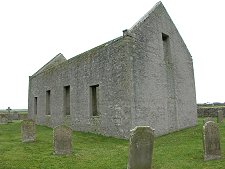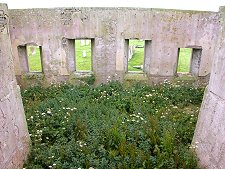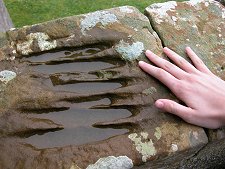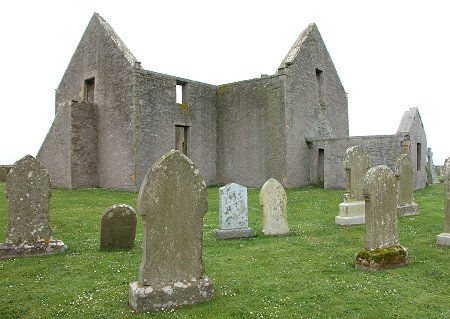 Lady Kirk from the North-West |
The austere ruins of Lady Kirk lie perhaps a mile south-west of Lady Village and a mile north-east of Kettletoft.
The church, whose walls still stand to their full height, dates back to 1773 but may well include walls from an earlier church. A door at the west end, obscured by a porch added in 1902, has been identified dating back to the 1600s. The fact that until its redundancy the church's effects included a pre-reformation communion cup suggests that there could well have been a series of churches or chapels on this site, perhaps dating back to to the Viking era or beyond. No physical evidence of this has been found, so it has to remain as speculation.
Today the exterior of the church is a study in grey, while the roofless interior doubles as an informal nature reserve. But most people come to Lady Kirk to look at one feature in particular. At the top of the steps that once gave access to the north gallery, the dressed stone balustrade carries a series of deep grooves known as the Devil's Clawmarks.
These are rather spooky, despite the fact that it would take a fairly large being with at least six fingers or claws to have made the marks in question. On the whole the sceptic is more likely to conclude that these are what is left of some sort of erosion of the stone from which the balustrade was cut.
But why would skilled masons have chosen to dress and expose the eroded side of a stone when all they'd have needed for a perfect finish would have been to work it the other way up: or use another piece of stone?
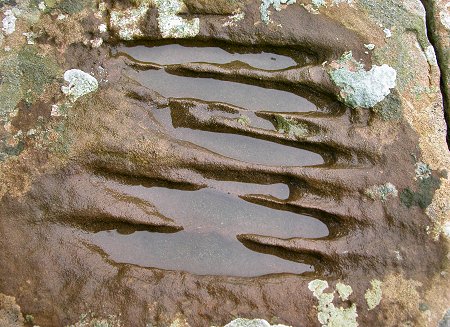 The Devil's Clawmarks in Close-Up |
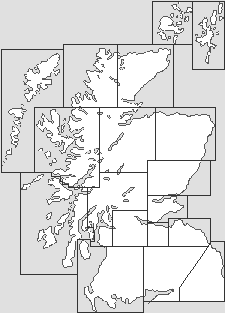
|
|
|
Visitor InformationView Location on MapGrid Ref: HY 677 399 What3Words Location: ///iceberg.bogus.ships |
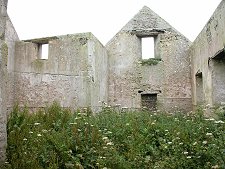 Interior, from West |
